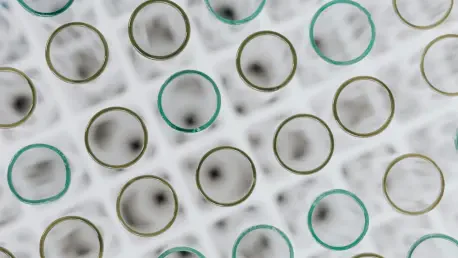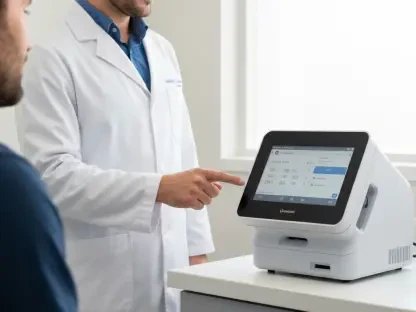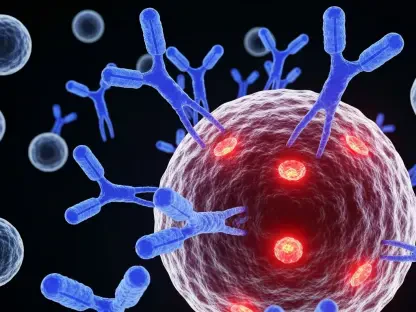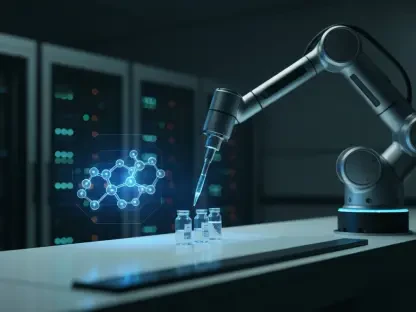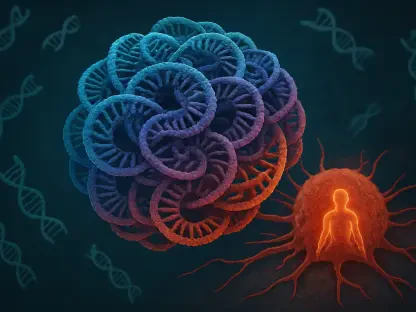The synthetic biology market is on an unprecedented trajectory, projected to swell to $40 billion by 2032. This substantial growth reflects synthetic biology’s rising influence across numerous critical sectors, including healthcare, agriculture, industrial biotechnology, and environmental sustainability. As the world continues its push toward sustainable practices and economic paradigms, synthetic biology stands out as a transformative force. By integrating advanced technologies like DNA synthesis, CRISPR, and computational biology, the market is poised for a Compound Annual Growth Rate (CAGR) of 11.69%. This evolution highlights synthetic biology’s increasing prominence, bolstered by technological breakthroughs and driven by a relentless pursuit for sustainable, scalable solutions in numerous industries.
Technological Advancements Fueling Growth
In recent years, technological advancements have significantly accelerated synthetic biology’s potential, opening the doors to applications previously unimaginable. DNA synthesis and sequencing, for instance, have matured to a point where creating complex genetic blueprints is not just feasible but also efficient and economically viable. Simultaneously, CRISPR gene editing has become a cornerstone of innovation, offering unprecedented precision in genetic modification tasks crucial for developing novel therapeutics and precision agriculture solutions. Computational biology further amplifies this by enabling the sophisticated modeling and simulation of biological systems, thus facilitating the design of better, more targeted solutions that meet specific demands across industries.
Moreover, these technologies vastly broaden synthetic biology’s applicability beyond traditional scopes. In healthcare, they have been pivotal in the development of custom therapeutics and vaccine platforms, offering tailored solutions to combat complex diseases. In agriculture, CRISPR and similar technologies are being leveraged to enhance food security through improved crop resistance and yield optimizations. These technological underpinnings are also integral to advancements in environmental and industrial biotechnology sectors, where bio-based processes are gradually supplanting petrochemical methods, leading to more sustainable and environmentally conscious practices globally.
Industrial and Economic Impacts
The transition toward a bio-based economy is not just a futuristic vision but an ongoing transformation propelled by synthetic biology. In industrial biotechnology, synthetic biology’s impact is substantive, as it enables the development of novel biofuels, specialty chemicals, and eco-friendly materials that find applications across multiple domains. This shift is driven by a combined desire to reduce carbon footprints and the economic advantages provided by sustainable production methodologies. As industries transition from fossil fuel-based processes to bio-based alternatives, the benefits extend beyond environmental impacts to include cost efficiencies and enhanced product performance.
Economic impacts are equally compelling, with synthetic biology driving significant investments from both the public and private sectors. These investments are crucial for research advancements and commercial viability, fostering an environment ripe for innovation and competition. Strategic partnerships between biotechnology firms, academic institutions, and industrial stakeholders further facilitate growth, enhancing the scalability of synthetic biology applications. However, navigating regulatory frameworks remains a challenge, necessitating harmonized guidelines and safety standards to ensure ethical practices and consumer safety. As regulations evolve, especially in the U.S. and European markets, they are paving the way for more seamless integration of synthetic biology into mainstream applications.
Market Segmentation and Regional Growth
Understanding the synthetic biology market requires examining its segmentation by application, technology, end-use, organism type, and regions. This segmentation reveals where opportunities and challenges lie and helps stakeholders strategize effectively. In healthcare and pharmaceuticals, the potential for synthetic biology to generate custom therapeutics, including innovative vaccine development and gene therapy vectors, is immense. Agriculture stands to benefit from precision agriculture techniques that employ engineered crops and biosensors, driving efficiency and sustainability in food production.
Regionally, the synthetic biology market showcases vibrant growth, with North America leading the charge in R&D investment, regulatory frameworks, and commercial applications. Europe’s emphasis on environmental and industrial biotechnology is also noteworthy, drawing substantial entrepreneurial interest. Meanwhile, the Asia-Pacific region is emerging as a significant player due to governmental support, burgeoning biotech infrastructure, and an expanding talent pool. Countries in South America and the Middle East & Africa are developing their capacities, particularly in agricultural applications and bioenergy, positioning themselves as upcoming contributors to the global synthetic biology landscape.
Opportunities and Future Prospects
The future of the synthetic biology market is flush with opportunities that promise to further its influence and scope. One considerable area is the development of customized therapeutics aimed at tackling diseases that are rare or resistant to traditional treatments. There is also a burgeoning demand for sustainable products, such as biodegradable plastics and other eco-friendly materials, as industries continue to embrace bio-based alternatives. In agriculture, precision farming solutions foster crop enhancement and pest resistance, while environmental biotechnology is expanding its role in addressing pollution and climate change.
Optimizing biomanufacturing for scalability and cost efficiency remains another pivotal opportunity. The competitive landscape, marked by strategic partnerships and innovative product pipelines, highlights the market’s dynamic nature. Prominent players include Anthem Biosciences, Genomatica, and Illumina, among others. These companies are not only investing in artificial intelligence platforms and expanding intellectual property portfolios but also refining advanced bioprocessing capabilities to cater to the burgeoning market need.
Synthesis of Progress and Promise
In recent years, advances in technology have dramatically propelled synthetic biology, unlocking possibilities once thought unreachable. DNA synthesis and sequencing have reached a stage where crafting intricate genetic frameworks is not only possible but also efficient and cost-effective. At the same time, CRISPR gene editing stands as a pillar of innovation, providing remarkable accuracy in genetic alterations. This is essential for generating new therapies and tailored agricultural solutions. Computational biology boosts this progress by allowing detailed modeling of biological systems, which helps in creating precise, targeted solutions tailored to specific industry needs.
Furthermore, these technologies extend synthetic biology’s reach far beyond its traditional limits. In healthcare, they’ve been critical in crafting personalized medicines and vaccine strategies to tackle intricate diseases. In agriculture, CRISPR and similar methods are enhancing crop resilience and yields, improving food security. These technologies also drive progress in environmental and industrial biotechnology, where sustainable bio-based processes are replacing traditional petrochemical approaches.
